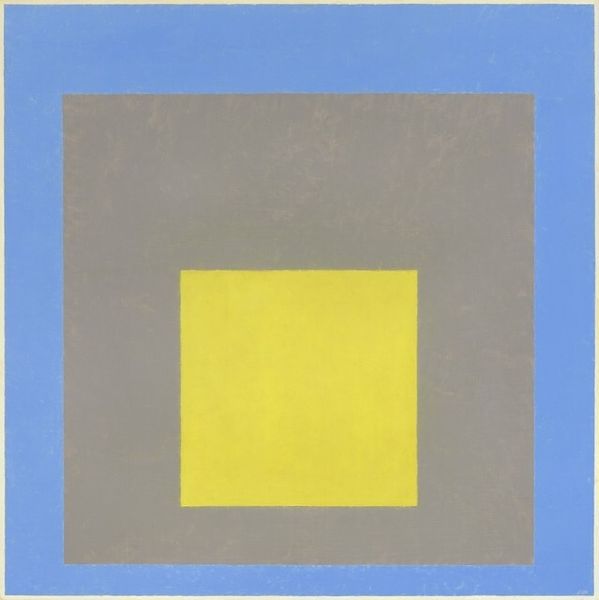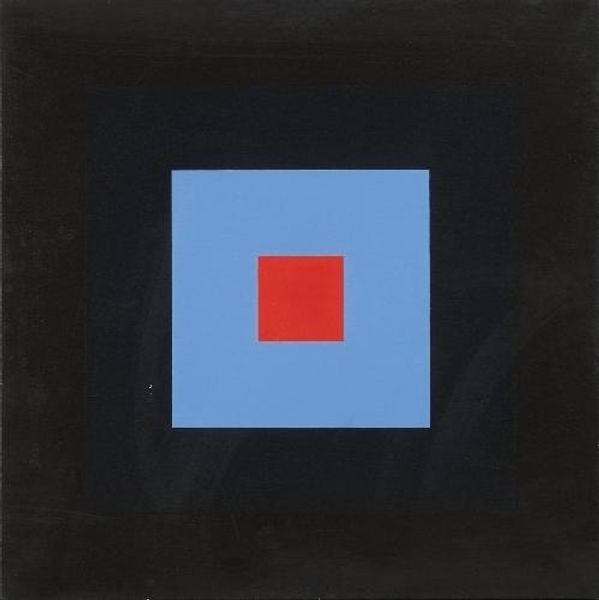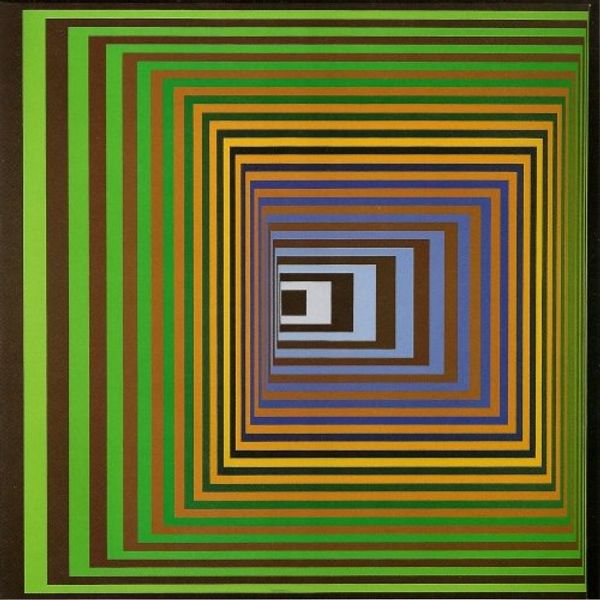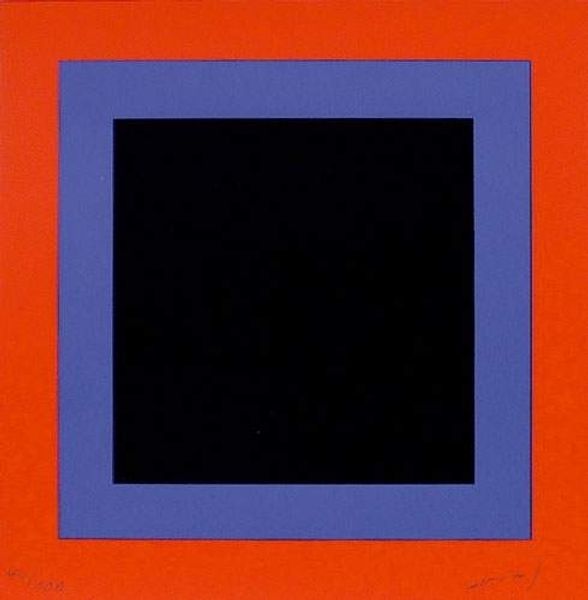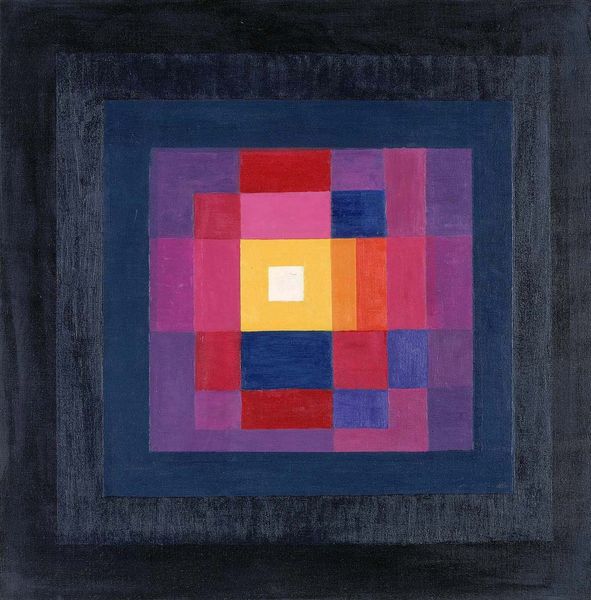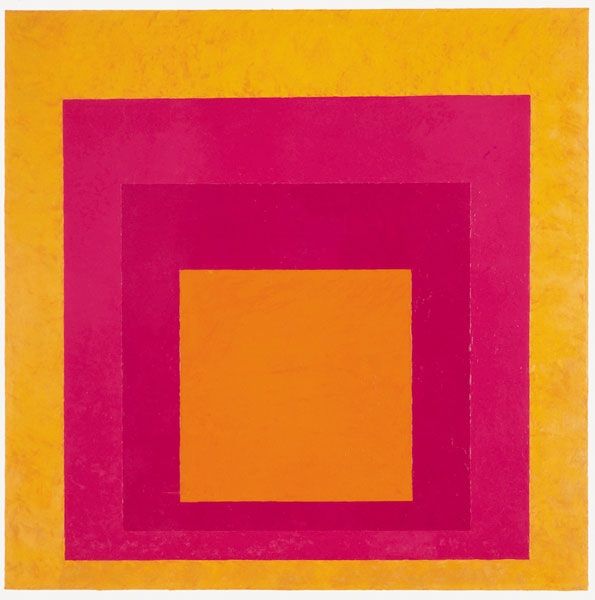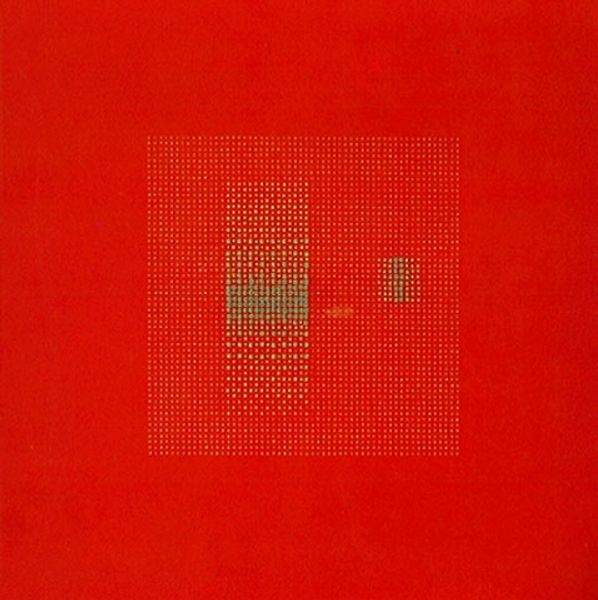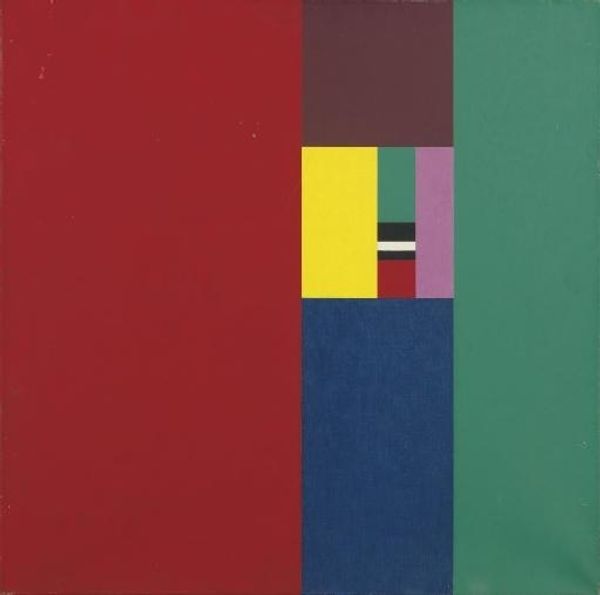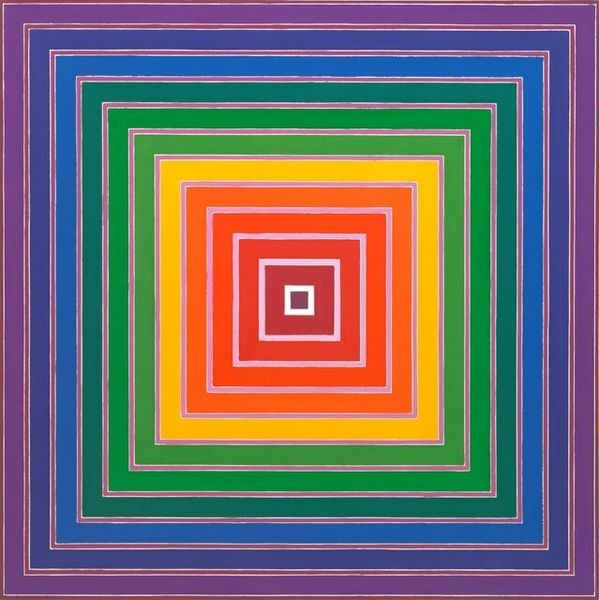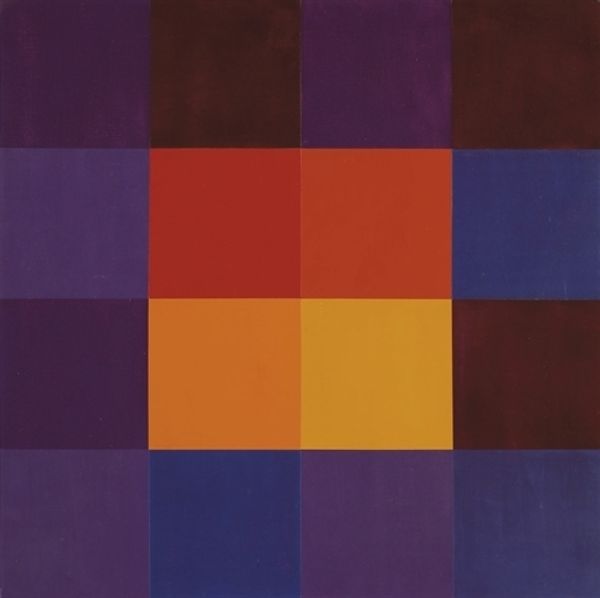
painting, acrylic-paint, serial-art
#
painting
#
minimalism
#
colour-field-painting
#
acrylic-paint
#
serial-art
#
geometric
#
geometric-abstraction
#
abstraction
#
modernism
#
hard-edge-painting
Dimensions: overall: 77.2 x 77.7 cm (30 3/8 x 30 9/16 in.)
Copyright: National Gallery of Art: CC0 1.0
Editor: So, this is Frank Stella’s "Rowley," painted in 1962. It’s an acrylic on canvas, and immediately, I notice the concentric squares. They pull my eye right to the center. It’s both calming and kind of… hypnotic? What do you see in this piece? Curator: Well, the painting undeniably speaks through the visual language of geometry. Notice how the nested squares, each a different color, are delineated by thin, unpainted lines? These aren’t just colors, they are containers of feeling and memory, especially in a post-war context. Editor: Containers? In what sense? Curator: Think about what squares might have represented, historically and culturally. We see the square in city planning, architecture, even the division of agricultural land. Here, Stella is perhaps challenging these inherited associations by paring down the image to its purest form. The hard edges of the squares suggest rigid order, but the shifting colours invite a sense of vibrancy and almost defiant self-expression. Do you find yourself attributing other meanings to any of these colours? Editor: Hmm, maybe the blue evokes a feeling of stability or authority, while the yellow center has an element of almost childish joy. The painting is clearly not striving for realistic representation, but there’s something profoundly human about it, perhaps as emotional touchstones. Curator: Exactly. This interaction of formal geometry with symbolic colour gives “Rowley” its lasting power. It reminds us how a simplified composition can hold very complex human experiences. Editor: I get that. It seems both completely straightforward and also filled with subtle suggestions of memory and symbolism. I’ll never look at a square the same way.
Comments
No comments
Be the first to comment and join the conversation on the ultimate creative platform.
